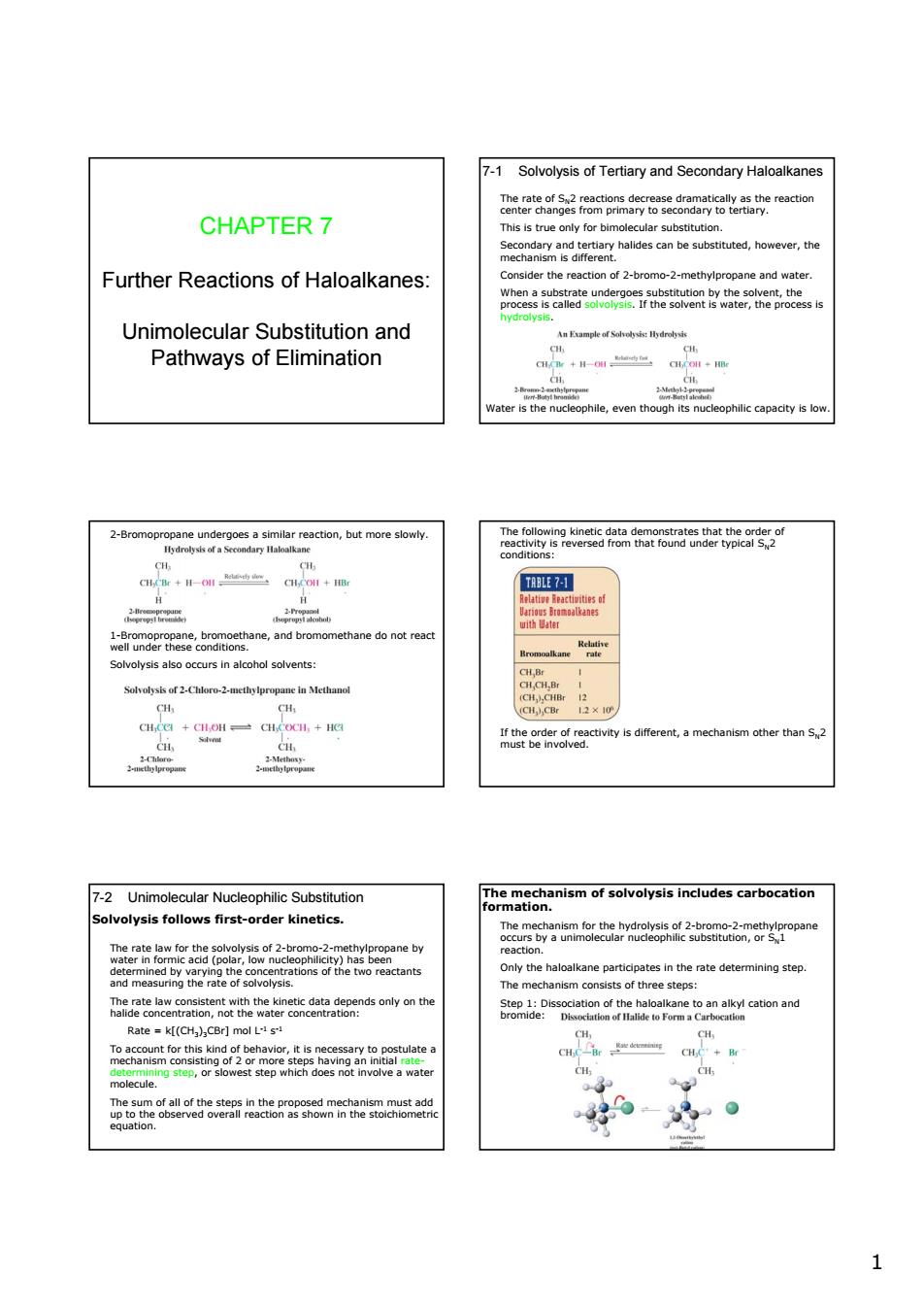正在加载图片...

7-1 Solvolysis of Tertiary and Secondary Haloalkane CHAPTER 7 nhalde caid,hrh Further Reactions of Haloalkanes: ction of 2 methylpropane and wate 8aa8ag98n8e9o72eo8a Unimolecular Substitution and Pathways of Elimination TRBLE 7-1 Solvolysis also occurs in alcohol solvents: Solvulysis of 2.Chloco-2-mcchylpropane in Methan 7-2 Unimolecular Nucleophilic Substitution annshanismofsotwotyaisinaudescarbocatiom Solvolysis follows first-order kinetics. 2 5wam8anreaa2e2ooen e dby varying the Only the haloalkane participates in the rate determining step The anism consists of three steps Rate[(H),CBr]mol Ls 8 11 CHAPTER 7 Further Reactions of Haloalkanes: Unimolecular Substitution and Pathways of Elimination 7-1 Solvolysis of Tertiary and Secondary Haloalkanes The rate of SN2 reactions decrease dramatically as the reaction center changes from primary to secondary to tertiary. This is true only for bimolecular substitution. Secondary and tertiary halides can be substituted, however, the mechanism is different. Consider the reaction of 2-bromo-2-methylpropane and water. When a substrate undergoes substitution by the solvent, the process is called solvolysis. If the solvent is water, the process is hydrolysis. Water is the nucleophile, even though its nucleophilic capacity is low. 2-Bromopropane undergoes a similar reaction, but more slowly. 1-Bromopropane, bromoethane, and bromomethane do not react well under these conditions. Solvolysis also occurs in alcohol solvents: The following kinetic data demonstrates that the order of reactivity is reversed from that found under typical SN2 conditions: If the order of reactivity is different, a mechanism other than SN2 must be involved. 7-2 Unimolecular Nucleophilic Substitution Solvolysis follows first-order kinetics. The rate law for the solvolysis of 2-bromo-2-methylpropane by water in formic acid (polar, low nucleophilicity) has been determined by varying the concentrations of the two reactants and measuring the rate of solvolysis. The rate law consistent with the kinetic data depends only on the halide concentration, not the water concentration: Rate = k[(CH3)3CBr] mol L-1 s-1 To account for this kind of behavior, it is necessary to postulate a mechanism consisting of 2 or more steps having an initial ratedetermining step, or slowest step which does not involve a water molecule. The sum of all of the steps in the proposed mechanism must add up to the observed overall reaction as shown in the stoichiometric equation. The mechanism of solvolysis includes carbocation formation. The mechanism for the hydrolysis of 2-bromo-2-methylpropane occurs by a unimolecular nucleophilic substitution, or SN1 reaction. Only the haloalkane participates in the rate determining step. The mechanism consists of three steps: Step 1: Dissociation of the haloalkane to an alkyl cation and bromide: